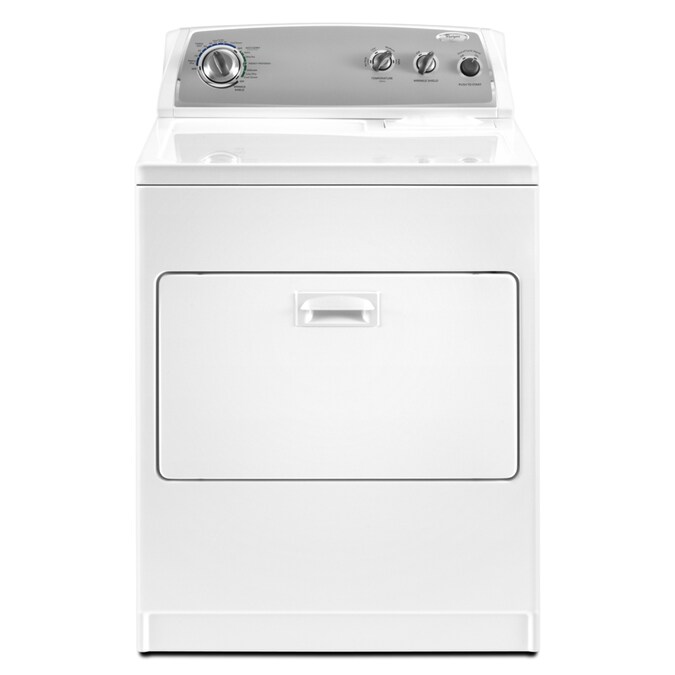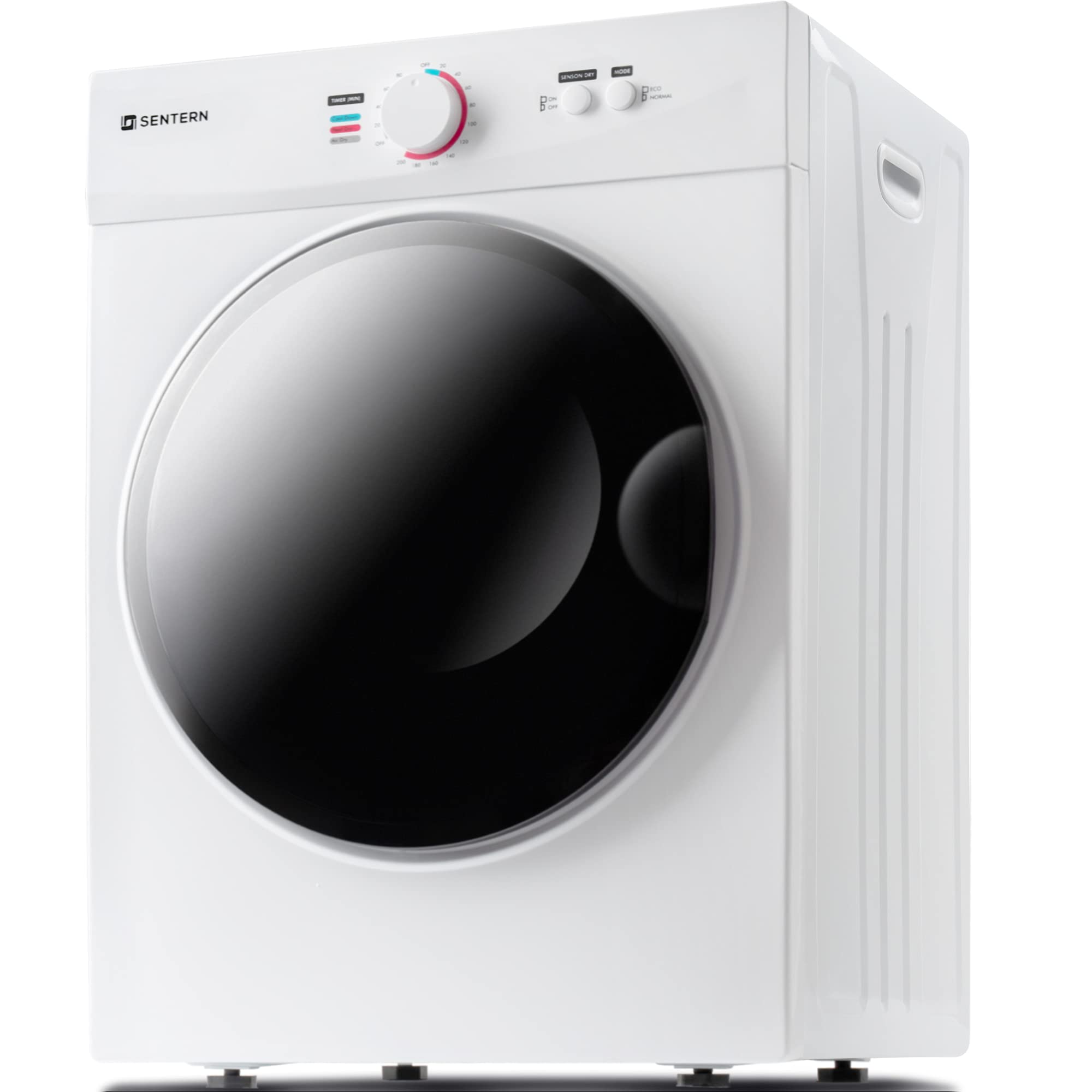Key Factors Affecting Dryer Times
How long should clothes be in the dryer? When it comes to laundry, drying times can be a puzzle. Several elements can influence how long your clothes need to spend tumbling in the warmth. Understanding these factors will help avoid the annoyance of damp garments or wasted time.

Importance of Load Size and Material Type
The amount and types of clothing in your dryer play a huge role. A larger load will naturally take longer to dry than a smaller one. Materials matter, too. Heavy fabrics, like denim and towels, hold more water and need more time. Light materials like linens and synthetics dry faster. Group similar fabrics together to ensure even drying and prevent damage.
Impact of Dryer Efficiency and Settings
The dryer’s efficiency is key. An old or poorly maintained dryer may take longer to dry clothes. The settings you choose also affect the time. For instance, a high heat setting will dry clothes faster than a low heat setting. However, too much heat can harm certain fabrics. Always check the labels on your clothes for the recommended settings. Choose a setting that balances efficiency with care for your clothes.
Typical Dryer Times for Different Clothing Items
How long should clothes be in the dryer? Understanding how long clothes should stay in the dryer is essential for efficient laundry management. Below, we delve into typical drying times, focusing on both heavy and light textile items.
Drying Times for Heavy Items like Towels and Denim
Heavy items such as towels and denim are robust and thick, making them absorb a lot of water. As a result, they generally take longer to dry compared to lighter textiles. For example, a full load of bath towels might need up to 60 minutes on a high heat setting to dry completely. Denim, on the other hand, might require around 50 minutes, depending on its thickness and the amount of water it retains after the wash.
When drying these items, it’s crucial to set the dryer appropriately to prevent damage like shrinkage or wear. It’s often better to dry heavy items separately to ensure they have enough space to tumble freely, which aids in faster and more even drying.
Faster Drying Options for Lighter Textiles
Lighter textiles such as linens, synthetic fibers, and thinly woven cotton dry much quicker. These materials generally take about 30 to 40 minutes on a medium heat setting. Items like blouses, undergarments, and sheets are ideal candidates for this category.
To optimize the drying process for these lighter items, you can use lower heat settings or shorter cycles. This not only saves energy but also minimizes the wear on fabrics that are less durable under high heat. Additionally, grouping similar lightweight textiles in a single load can enhance the drying efficiency, ensuring that all items receive adequate air circulation and heat.
In summary, knowing the suitable drying time for different types of clothing items can significantly enhance your laundry routine. It ensures that clothes come out perfectly dry and maintains their quality over time.
Steps to Optimize Your Dryer Usage
Maximizing the efficiency of your dryer involves more than just setting a timer. Taking proactive steps can ensure your clothes come out perfectly dry without wasting energy or time. Consider these actionable tips to optimize your dryer usage.
Selecting the Right Dryer Settings
Choosing the right settings is vital for optimal drying. Start with sorting clothes by fabric type and weight. Use a lower heat for delicate items to prevent damage. For heavier garments, select a higher heat setting. Remember, different fabrics require different levels of heat. Check clothes tags for specific drying instructions. Adjust the settings accordingly to match the load. This way, you can avoid over-drying, shrinkage, and fabric damage.
Importance of Cleaning the Lint Filter
A clean lint filter is crucial for dryer efficiency. A clogged filter restricts airflow, which extends drying time. This can lead to higher energy bills and potential safety risks. Before each use, remove the filter and peel away the lint. Check the filter’s housing and fittings too. Keeping the filter clean boosts the machine’s performance and safety. Make it a habit to clean the lint filter regularly to promote better airflow and faster drying.
By paying attention to these steps, you can enhance the performance of your dryer. The right settings and a clean lint filter lead to more efficient drying cycles. As a result, you save time, energy, and money while taking care of your clothes.
How to Handle Partially Dry Items
How long should clothes be in the dryer? Handling partially dry items effectively can prevent moisture-related issues and save energy. Here are practical ways to manage them at home.
Tips for Air Drying at Home
If your clothes are not completely dry, air drying is a sound option. Hang them in a well-ventilated area to avoid mustiness. You can use a drying rack, which allows air to circulate around the clothes, speeding up the drying process. Ensure the room is dry and warm but not overly heated to prevent damage to the fabrics.
Make use of natural air currents by opening windows or using a fan. This method is especially efficient on a sunny day. Lightweight materials like linens and synthetics benefit most from air drying as they dry quickly.
Managing Damp Items to Avoid Damage
To handle damp items without causing damage, the first step is to separate them from fully dry items immediately. Store damp clothes in a breathable basket to prevent mildew growth until you can air dry them.
Avoid leaving damp clothes in a lump. Spread them out to ensure quicker and even drying. Be mindful not to stretch the garments while wet to maintain their shape. For thicker items like towels or heavy jeans, consider spinning them in the dryer for a short additional period if they’re too damp.
By following these tips, you can effectively manage partially dry items, ensuring they end up perfectly dry and undamaged.
 How to Save Time and Money at the Laundromat
How to Save Time and Money at the Laundromat
Saving time and money at the laundromat is a goal for many. Here are some tips to help you achieve that.
Using Multiple Loads and Efficient Machines
When you’re at the laundromat, try washing multiple loads at the same time if there are enough machines. This approach lets you dry many items together, cutting down on waiting. But don’t overstuff the dryer—this can lead to uneven drying and wasted time. Instead, aim for a balance that allows for good air circulation.
Look for efficient machines when choosing a laundromat. Newer models often dry faster and use less energy. This means your clothes finish quicker, and you spend less on each visit. Always check the machine’s lint filter before you begin. A clogged filter can slow down drying, costing you extra money and time.
Remember, strategic planning goes a long way. Separate your fabrics at home before heading out. Wash heavy items like towels and jeans separately from lighter fabrics. By doing so, you won’t need to wait for heavy items to dry before starting on the lighter loads. Finally, consider the timing of your visit. Laundromats can be busy, so find a time when they’re less crowded to speed up your laundry process.
Implementing these tips can lead to a more efficient laundromat experience. Not only do you save time, but your clothes come out just right.
Additional Advice for Laundromat Owners
As a laundromat owner, maintaining your machines is vital. Here’s how you can offer a better experience.
Best Practices for Machine Maintenance and Customer Guidance
Ensuring that your machines run well is key to customer satisfaction. Perform regular checks and repairs. This prevents breakdowns and keeps drying times short. Clean out lint filters after each cycle. This helps maintain airflow and efficiency.
Educate your customers on optimal dryer usage. Post signs with drying times for different fabrics. Offer tips on load sizes and settings. This guidance can help them save quarters and time. Consider creating handouts or having staff ready to advise.
By focusing on maintenance and customer guidance, you can make laundry day smoother. Your clients will leave happier and are more likely to return. And remember, happy customers tell others about their good experiences.
 Summary of Overall Laundry Process
Summary of Overall Laundry Process
Doing laundry takes up a chunk of your week. The time varies based on many factors. It involves steps from prepping clothes to storing them away after drying.
Time Estimations from Washing to Putting Away Clothes
The laundry routine includes multiple stages. First is the prep. Sorting and moving clothes to the laundry area can take about 30 minutes a week. Then comes the washing. Most clothes get clean in about 40 to 80 minutes per week, depending on how dirty they are. Drying times can range from 30 to 45 minutes per load.
It’s not over once the dryer buzzes. You have to fold the clothes, which can take about 20 minutes for an average load. The last task is putting your clothes away. This final step might only take a few minutes, but it adds up.
In all, you could be spending upwards of two hours per load. Streamline the process to save time. Use tips like sorting by fabric type and using efficient washing and drying cycles. Also, consider services like wash & fold to cut down on personal laundry time.
By understanding the total time investment for laundry, you can manage your schedule better. Plus, by knowing how long should clothes be in the dryer, you avoid common mishaps like shrunken shirts or stiff jeans. Aim for laundry efficiency to make the most of your time.
